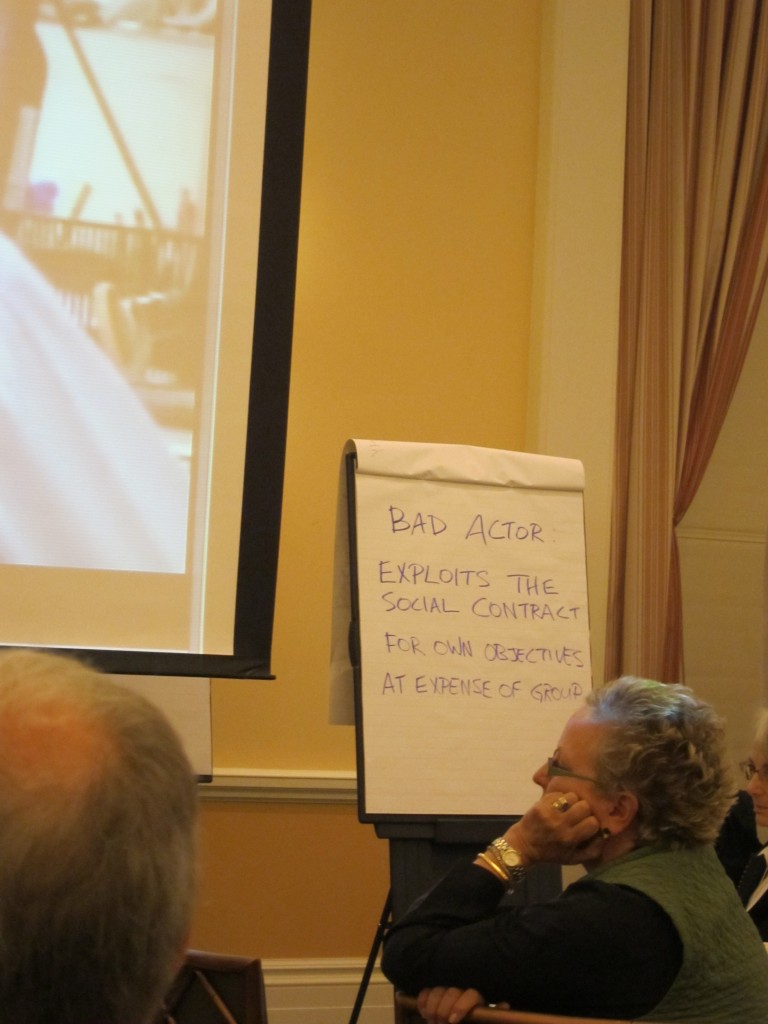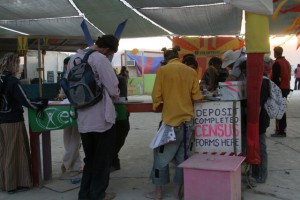One of the aspects that I enjoy about Burning Man is the opportunity to learn something new, such as a new skill, experience, or practice. Burning Man’s constant experimentation makes such learning opportunities possible. One such experiment this year is the “Circle of Regional Effigies,” otherwise known as CORE, in which regionals from across the US and around the world will build a representative effigy to burn around the Man. Some regionals, like Las Vegas, have even made websites where you can learn more about their projects’ efforts and progress. These projects are channeling local communities’ efforts into producing more collaborative, participatory art to be shared both locally and at Burning Man.
Yesterday, my partner and I spent several hours working with other volunteers sandpapering, gluing, and nailing cut wood for the “Tree of Heaven,” which is the NYC regional effigy. Jesse Green and “Kat” Fitzgerald designed this installation of a wooden tree surrounded by benches representing different boroughs’ bridges. In a scene reminiscent of the Hawthorne studies’ wiring experiments, as a group, we also cut and connected wiring to LED lights for the base of the installation, which reproduces a public transportation map of subway lines. Under the guidance of other volunteers, I learned how to cut wires down, which other volunteers then connected to LED strips representing the different MTA subway lines and the NJ PATH trains. As the designated “quality control” person, I also learned how to determine whether wires were properly connected to the LED strips by testing the leads on a power supply. While such hands-on work came as second nature to my partner, who earned a PhD working in a lab and had eagerly brought his own tools for this occasion, for me, this new experience demystified some of the nuts and bolts of putting together an art project.
Later on, at dinner, my fortune cookie summarized my experiences for the day: “Today is a great day for learning something new.” My partner got the fortune “Really great people make you feel that you too can become great,” which was also an appropriate testament to collaborative projects such as CORE.



